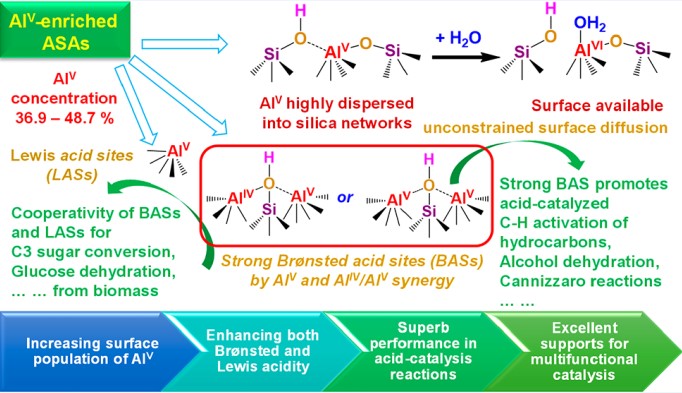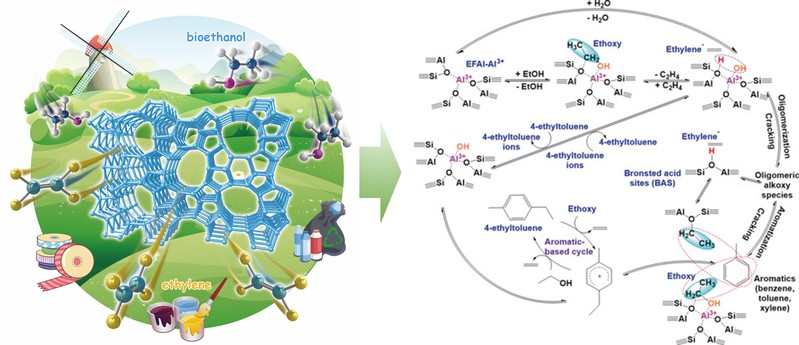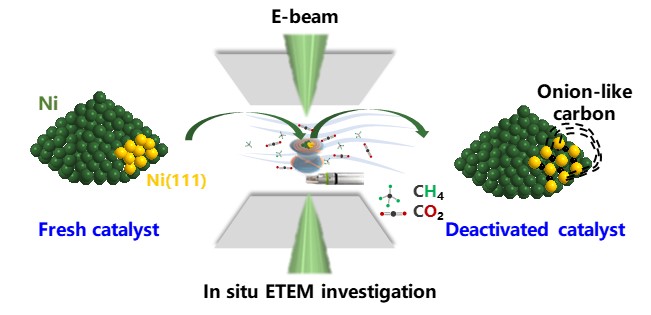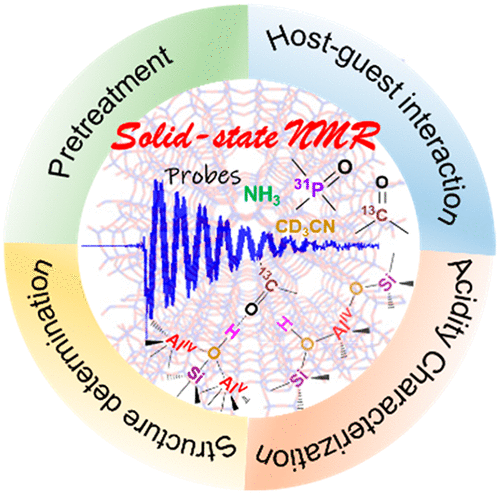IntroductionProfessor Wang is working at the Beijing University of Chemical Technology since 2022. He obtained his Ph.D. from the University of Sydney, Australia, in 2015. From 2015 to 2018, he conducted postdoctoral research at the University of Sydney in Australia and Case Western Reserve University in the United States. From 2019 to 2022, he joint Macquarie University in Australia as an Australia Research Council Discovery Early Career Research Award fellow. His research focuses on the rational design of heterogeneous catalysts for green and sustainable energy and chemical production, in situ spectroscopic studies on catalyst structure and reaction mechanism, particularly in the conversion of biomass and CO2 into value-added chemicals. So far, he has published more than 70 papers, including over 40 papers as first or corresponding author in journals such as Acc. Chem. Res., Nature Communications, Angew. Chem. Int. Ed, ACS. Catal., Mater. Today, Appl. Catal. B, Green Chem., J. Catal. He has recieved several awards, including Discovery Early Career Researcher Award from Australia Research Council, Chinese National Excellent Self-Funded Scholarships etc. EducationWork ExperienceSocial PositionSocial ActivitiesResearchHis research focuses on the rational design of heterogeneous catalysts for green and sustainable energy and chemical production, through in situ spectroscopic studies on catalyst structure and reaction mechanism, particularly in the conversion of biomass and CO2 into value-added chemicals. 1. Pentacoordinated Aluminum Species: New Frontier for Tailoring Acidity-Enhanced Silica–Alumina Catalysts (Acc. Chem. Res.2020, 53, 2648–2658)
2. Insight into Three-Coordinate Aluminum Species on Ethanol-to-Olefin Conversion over ZSM-5 Zeolites (Angew. Chem. Int. Ed.2019, 58, 18061–18068)
3. Reveal and correlate working geometry and surface chemistry of Ni nanocatalysts in CO2 reforming of methane (Materials Today, 2024,79, 16-27)
4. Qualitative and Quantitative Analysis of Acid Properties for Solid Acids by Solid-State Nuclear Magnetic Resonance Spectroscopy (J. Phys. Chem. C 2021, 125, 10179-10197)
TeachingPostgraduatesFundingVertical ProjectHorizontal ProjectPublicationsSelected publications 1. Wang, Z.; Li, T.; Jiang, Y.; Lafon, O.; Trébosc, J.; Baiker, A.; Liu, Z.; Amoureux, J.-P.﹡; Huang, J.﹡Acidity enhancement through synergy of penta- and tetra-coordinated aluminum species in amorphous silica networks. Nat. Commun.2020, 11, 225. 2. Wang, Z.; Jiang, Y.; Lafon,O.; Trébosc, J.; Kim, K.-D.; Stampfl, C.; Baiker,A.; Amoureux, J.-P.﹡; Huang, J.﹡ Brønsted acid sites based-on penta-coordinated aluminum species. Nat. Commun. 2016,7, 13820. 3. Wang, Z.; Jiang, Y.; Baiker, A.﹡; Huang, J.﹡ Pentacoordinated aluminum species: New frontier for tailoring acidity-enhanced silica-alumina catalysts. Acc. Chem. Res.2020, 53, 2648–2658. 4. Wang, Z.; O'Dell, L.A.; Zeng, X.; Liu, C.; Zhao, S.; Zhang W.; Gaborieau, M.; Jiang, Y.; Huang, J.﹡ Insight into three-coordinated aluminium species on ethanol-to-olefin conversion over ZSM‐5 zeolites. Angew. Chem. Int. Ed.2019, 58, 18061–18068. 5. Wang, Z.; Buechel, R.; Jiang, Y.; Wang, L.; Xu, H.; Castignolles, P.; Gaborieau, M.; Lafon, O.; Amoureux, J.-P.; Hunger, M.; Baiker, A.﹡; Huang, J.﹡ Engineering the distinct structure interface of subnano-alumina domains on silica for acidic amorphous silica–alumina toward biorefining. JACS Au 2021, 3, 262-271. 6. Wang, Z.; Lv, Q.; Li, A.﹡; Wu, P; Wang, L.; Li, W.; Jiang, Y.; Stampfl, C.; Liao, X.; Huang, J.﹡; Han, X.﹡Reveal and correlate working geometry and surface chemistry of Ni nanocatalysts in CO2 reforming of methane, Materials Today, 2024,79, 16-27. 7. Wang, Z.; Wang, D.; Li, A.﹡; Wang, L.; Han, X.﹡; Jiang, Y.; Chen, J.; Huang, J.﹡ Interface Catalytic Reduction of Alumina by Nickle for the Aluminum Nanowire Growth: Dynamics Observed by in situ TEM. Nano Res.2024, 17,1225-1231. 8. Wu, D.; Guo, J.; Wang, H.; Zhang, X.; Yang, Y.; Yang, C.; Gao, Z.; Wang, Z.﹡; Jiang, K﹡. Green Synthesis of Boron and Nitrogen co-doped TiO2 with Rich BN Motifs as Lewis Acid-Base Couples for the Effective Artificial CO2 Photoreduction under Simulated Sunlight. J. Colloid Interface Sci.2021, 585, 95-107. 9. Wang, Z.; Huang, J.; Amal R.; Jiang, Y.﹡Solid-state NMR study of photocatalytic oxidation of acetaldehyde over flame-made F-TiO2 catalyst.Appl. Catal. B-Environ.2018, 223, 16-21. 10. Wang, Z.; Jiang, Y.; Yang, W.; Li, A.; Hunger, M.﹡; Baiker, A.﹡; Huang, J.﹡ Tailoring single site VO4 on flame-made V/Al2O3 catalysts for selective oxidation of n-butane. J. Catal.2022, 413, 93-105. 11. Zhao, Y.; Wang, L.; Kochubei, A.; Yang, W.; Xu, H.; Luo, Y.; Baiker, A.; Huang, J.; Wang, Z.﹡; Jiang, Y.﹡ Formation and location of Pt single sites induced by pentacoordinated Al species on amorphous silica-alumina. J. Phys. Chem. Lett.2021, 12, 2536-2546. 12. Kim, K.; Wang, Z.﹡; Jiang, Y.;Hunger, M.; Huang, J.﹡ The cooperative effect of Lewis and Brønsted acid sites on Sn-MCM-41 catalysts for the conversion of 1,3-dihydroxyacetone to ethyl lactate. Green Chem.2019, 21, 3383-3393. 13. Wang, Z.; Wang, L.; Jiang, Y.; Hunger, M.; Huang, J.﹡Cooperativity of Brønsted and Lewis acid sites on zeolite for glycerol dehydration. ACS Catal. 2014,4, 1144-1147. 14. Zeng, X.; Wang, Z.﹡; Ding, J.; Wang, L.; Jiang, Y.; Stampfl, C.; Hunger, M.; Huang, J.﹡ Catalytic arene alkylation over H-Beta zeolite: Influence of zeolite shape selectivity and reactant nucleophilicity. J. Catal.2019,380, 9-20. 15. Wang, Z.; Ling, H.; Shi, J.; Stampfl, C.; Yu, A.; Hunger, M.; Huang, J.﹡ Acidity enhanced [Al]MCM-41 via ultrasonic irradiation for the Beckmann rearrangement of cyclohexanone oxime to ɛ-caprolactam. J. Catal. 2018,358, 71-79. AwardsPatentHonor RewardAdmissions Information |





